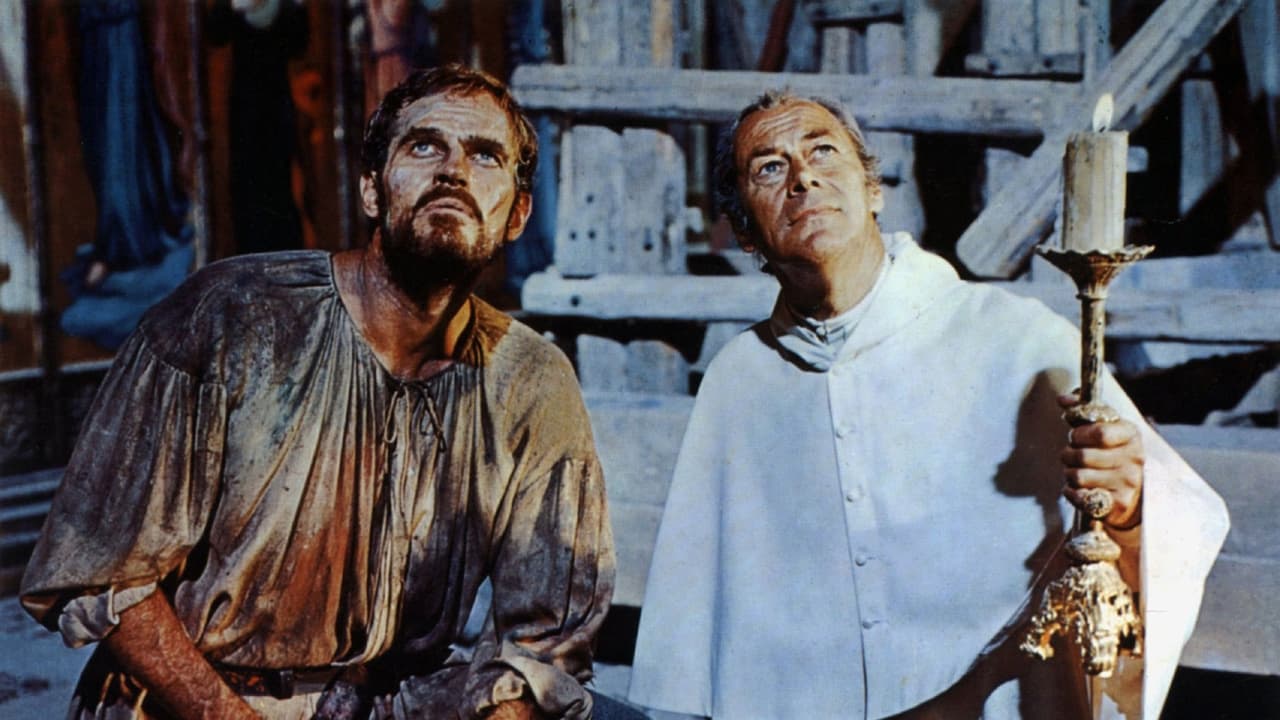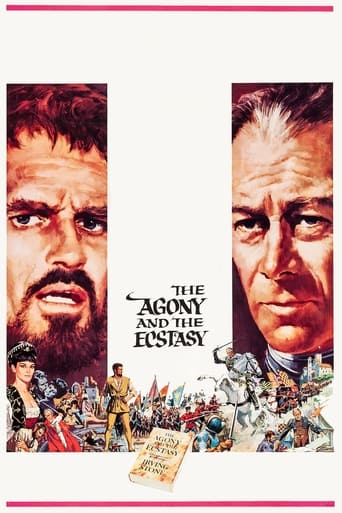

A different way of telling a story
... View MoreThis movie feels like it was made purely to piss off people who want good shows
... View MoreIf you're interested in the topic at hand, you should just watch it and judge yourself because the reviews have gone very biased by people that didn't even watch it and just hate (or love) the creator. I liked it, it was well written, narrated, and directed and it was about a topic that interests me.
... View MoreAll of these films share one commonality, that being a kind of emotional center that humanizes a cast of monsters.
... View MoreNot quite the disaster the critics made it out to be but hardly likely to be remembered among the best of Carol Reed. It was a prestige production done on a grand scale but neither Philip Dunne's screenplay nor, indeed, Irving Stone's original novel were inspirational. The subject, of course, is Michaelangelo's painting of the ceiling of the Sistine Chapel and Charlton Heston, who else, is a hugely miscast Michaelangelo, (he's heterosexual, for starters). He does what he can with the part but the material defeats him. On the other hand, Rex Harrison not only carries the movie but redeems it. He barnstorms his way through the part of Pope Julius II, the man who commissioned Michaelangelo in the first place. He even manages the fanciful dialogue, barking it out as though it were Shakespeare. There's also a decent supporting cast, both British and Italian, with the Italians largely dubbed, but they too are wasted. Does it give us any insight into the man or his work? Absolutely not, but as epics go it's a pleasant enough time-passer.
... View MoreThe biographical story of Michelangelo's troubles while painting the Sistine Chapel at the urging of Pope Julius II.I went into this film unaware. I knew a little about Michelangelo, nothing about Pope Julius, and very little about the Sistine Chapel (which I now know was built and named for Julius' uncle). But I love that it started with a short overview of Mike's work, because that really set the tone.How accurate this is, I do not know. But it makes for an interesting struggle: the leader of the Catholic Church against probably the greatest artist of his time. Was there really a fight to make the sculptor paint? I suppose so. What was Michelangelo's faith, because this film sure makes him seem less than thrilled to be working for the Catholic Church...
... View MoreThis movie is a credit to the producers. It shows the Pope of Rome as human, and as a man who understands his weaknesses and God's greatness. I am a Baptist and hence do not hold to Roman Catholic theology. However, it is fair to say that the two main characters, Michelangelo and Pope Julius do a good job of pointing to the bigness of God and the smallness of man.The movie has some very good statements about God and His sovereignty. The Pope in a weak and humble moment is found by Michelangelo kneeling with a candle at the top of the scaffolding under the panel depicting creation. He asks with awe and wonder about how Michelangelo came to the image of God and man. The Pope then stated, "There is God Who created man, and the artist who was moved to paint the image . . . I am merely a Pope." And he meant "merely a Pope." He understood his smallness. At the end the dying Pope says to Michelangelo, "When I stand before God in judgment, I will place this ceiling in the balance against my sins . . . perhaps it will shorten my time in purgatory." Again, I do not hold to purgatory. But the Pope understood that only those things done for the glory of God will last. Good movie and does honor to history, WITHOUT bad language or sexual content. Good family fare.
... View Morea book. its adaptation. great actors. and beauty of nuances. result - not only a film. but a pledge for values. a realistic portrait of a genius. map of relationship between two different forms of power. and remarkable show. it is this kind of movie who becomes memorable because it contains a part of you. you may discover yourself in lines of Julius II. or you can be Michelangelo. important is the fact - you are not out of battle. because each character is more than silhouette of a nice shadow. because , the art of fresco, the taste of epic of Hollywood is only part , instrument for a splendid work of Rex Harrison and Charles Heston. this is its central virtue. to be portrait of a time, out of idealistic web and, in same time, in same measure, mirror for every period of history.
... View More